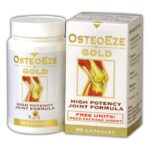Do Gold Lion Pills Work?

Gold Lion pills is a proprietary blend of Caviar powder, Tongkit All Root and Cinnamon Powder. Dietary supplements like Gold Lion pills are advertised to help people with penises who are self-conscious about their size. A person with concerns about their penis size may consider purchasing penis enlargement pills.
However, many people who believe their penis is smaller than average actually have an average penis size. A 2021 study notes that many men think that the average length of an erect penis is more than 6 inches (in). However, the research found that the average length of the penis is between 5.1 and 5.5 in.
Another study explains that those with an average penis size but believe they have less girth may have penile dysmorphophobic disorder. This condition causes people to have severe anxiety about their penis size. While most individuals have an average penis size and length, some health conditions may be responsible for a smaller penis size — these include micropenis and Peyronie’s disease.
Most dietary supplements like Gold Lion pills aren’t regulated. That means these supplements don’t require approval from the U.S. Food and Drug Administration (FDA) and don’t have to prove they’re safe or effective.
If supplements aren’t regulated, it’s easy for incorrect ingredient types or amounts to be listed on the packaging, which may make it difficult to know how they’ll affect your health. Sometimes called male enhancement supplements, these pills may also claim to increase energy levels and sexual performance.
How is Gold Lion pills taken?
The recommended dose of Gold Lion pill is one pill one hour before sexual activity. The makers recommend that you drink at least 16 ounces of water. Effects are activated when physical stimulation occurs and can last up to 72 hours according to the promoters. Everyone’s metabolism is different, consult your doctor before using any supplements.
What are the side effects of Gold Lion pills?
A 2016 review on the safety and toxicity of tongkat ali one of the ingredients in Gold Lion pills reported that it does not seem to have detrimental effects on sperm in test tubes when the scientists used it in therapeutic doses. However, animal studies show that in higher concentrations, it may be toxic.
Other possible side effects from this supplement include:
- Insomnia
- Irritability
- Restlessness
- Diarrhea
- Vomiting
- Dizziness
- Drowsiness, and others.
This is not a complete list of side effects and other serious side effects may occur. Call your doctor for information and medical advice about side effects. You may report side effects to FDA at 1-800-FDA-1088.
Does Gold Lion Pills Work?
The NHS states that although penis enlargement pill manufacturers claim these products increase the penis’s size, there is no clinical evidence to suggest that pills like Gold Lion pills boost an individual’s sexual performance or increase penis length or girth.
According to the Food and Drug Administration (FDA), many brands market sexual enhancement products as dietary supplements containing hidden active ingredients that could harm people’s health. These ingredients may include tadalafil and sildenafil, the active ingredients of Viagra and Cialis. These medications help treat erectile dysfunction (ED) and an enlarged prostate.
Food and Drug Administration Press Release on Gold Lion Pills
The Food and Drug Administration is advising consumers not to purchase or use Gold Lion, a product promoted and sold for sexual enhancement on various websites and possibly in some retail stores.
FDA laboratory analysis confirmed that Gold Lion purchased from eBay.com contains sildenafil, the active ingredient in Viagra, an FDA-approved prescription drug for erectile dysfunction. FDA approval of Viagra is restricted to use under the supervision of a licensed health care professional. This undeclared ingredient may interact with nitrates found in some prescription drugs, such as nitroglycerin, and may lower blood pressure to dangerous levels. People with diabetes, high blood pressure, high cholesterol, or heart disease often take nitrates.
Health care professionals and patients are encouraged to report adverse events or side effects related to the use of this product to the FDA’s MedWatch Safety Information and Adverse Event Reporting Program:
- Complete and submit the report online at MedWatch Online Voluntary Reporting Form, or;
- Download and complete the form, then submit it via fax at 1-800-FDA-0178.
Note: This notification is to inform the public of a growing trend of dietary supplements or conventional foods with hidden drugs and chemicals. These products are typically promoted for sexual enhancement, weight loss, and body building and are often represented as being “all natural.” FDA is unable to test and identify all products marketed as dietary supplements that have potentially harmful hidden ingredients. Consumers should exercise caution before purchasing any product in the above categories.





